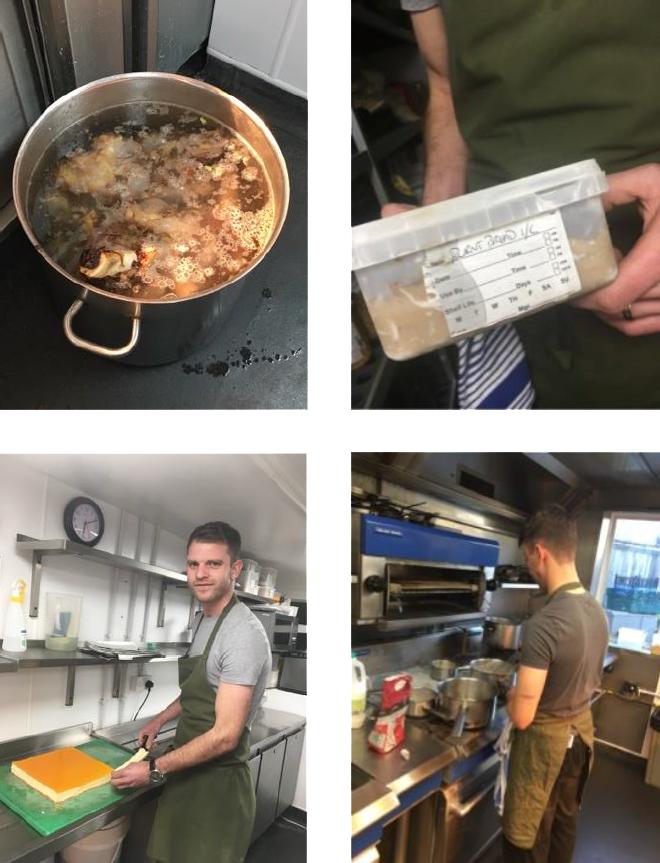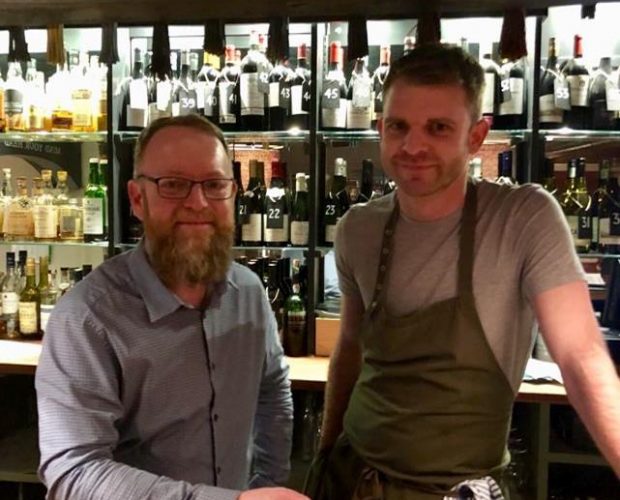The Greyhound
The Greyhound on the Test (The Greyhound) is a local independent country pub offering bed and breakfast and a restaurant with an average of 50-100 covers per day, and has a team of 42 part and full time employees.

KEY FACTS
– By tracking the food thrown away the staff noticed the biggest culprit was in the area of preparation, but that there were also challenges in spoilage. The exercise succeeded in reducing waste in both areas including a 24% reduction in preparation.
– Using the tracking sheets brought the front and back of house together through a partnership between the restaurant manager and the head chef, which helped to bring the wider teams together.
– The hope now is to keep staff engaged and for the head chef to maintain his focus on overseeing ordering and preparation to avoid a return to past habits.
SUMMARY
– The head chef worried about food waste but didn’t know how to tackle it. They suspected the main problem was spoilage. Using the tracking tools available helped to introduce the subject to staff and bring the front and back of house together to look at the problem and how to tackle it.
– Now they’ve identified the areas generating the most waste and how waste is being generated. They also pay more attention to orders and have come up with a popular recipe for bread ice-cream to deal with the waste that comes from breakfast in particular.
TIP
Engage staff with this video.

“What is most important for me and the head chef is working together to really see the full picture. I understand the costs, but it helps for me to actually see the food waste. It really does sink into our industry brains. It’s definitely has had an impact.”
Doug
Restaurant Manager
KEY FINDINGS
The waste weighed over the first week highlighted an estimated £6,601 annual loss of earnings due to food waste. In terms of economic impacts, the estimated annual cost of food waste for The Greyhound equated to 66% of a week’s turnover for a small to medium country food-led pub (£5,989, based on British Beer and Pub Association’s Town/Country Food Led guide).
Contrary to predictions during the group interview (for spoilage to be the principal generator of food waste), preparation waste was the biggest issue for the business at 52% of the food waste generated, with plate waste at 32% and spoilage at 16%.
THE RESULTS
The second phase of tracking showed reductions in all three areas, preparation was down by 24%, plate waste by 6% and spoilage by 17% which, despite the challenges of time and staff departures, suggests the introduction of the food waste reduction tools had a positive impact on The Greyhound’s ability to tackle the food waste challenge.
Ahead of the second week of weighing, the head chef highlighted the challenge they experienced engaging the kitchen staff in the exercise and changing the bin system from one at each station to three they shared.
Despite the staff engagement challenge, the head chef reports that the overall experience created positive actions that helped to tackle The Greyhound’s impact on food waste. They emphasised spending more time overseeing the outside fridge had helped to avoid further spoilage issues. They also mentioned the creation of new dishes to avoid additional plate waste generated by breakfast (bread ice-cream).
Finally, they reported the development of a more positive relationship between front of house and the kitchen because of the exercise.
The restaurant manager also reported the positive difference that driving the exercise forward, in partnership with the head chef, had made.
This case study has been based on research conducted in 2016.
“I like to think as a human you would be interested in this not just for the money, getting it into their [Staff] frame of mind would help to show them what is going into the bin.” Chris, Head Chef.

